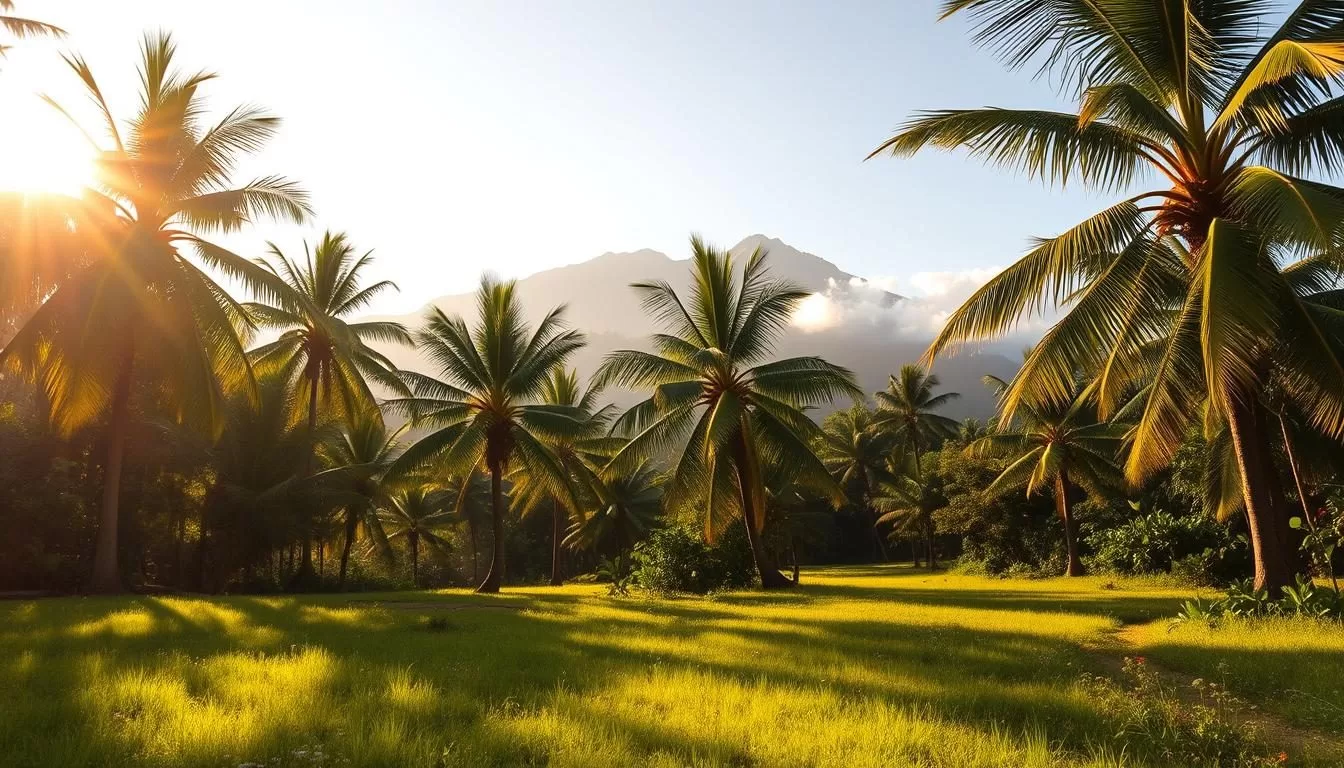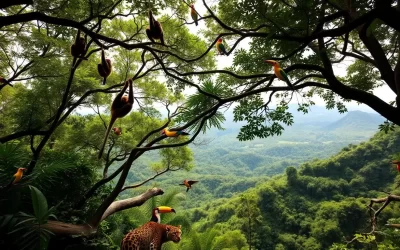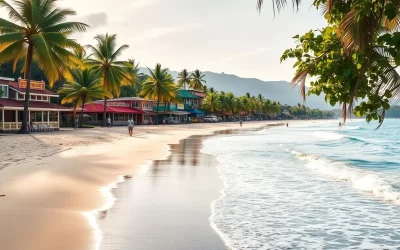✓ Accommodations ✓ Flights ✓ Rental Cars ✓ Tours & Activities
Planning a trip to Costa Rica can be a thrilling experience, but understanding the country’s climate is crucial for making the most of your adventure. With its tropical climate and diverse microclimates, Costa Rica offers unique travel experiences throughout the year.
The country’s location near the equator influences its climate patterns, creating distinct dry and green seasons. You’ll want to time your trip according to your preferences, whether you’re looking for sunny days on the Pacific coast or lush landscapes during the rainy season. With average temperatures ranging from 70-80°F (21-27°C) year-round, you can enjoy weather that’s perfect for outdoor activities.
Understanding the regional weather differences and the season you’ll be visiting is key to a successful trip. By choosing the right month for your travel goals, you can make the most of your time in this beautiful country.
Understanding Costa Rica’s Climate Patterns
Costa Rica’s diverse climate patterns make it a year-round destination for travelers. The country’s climate varies significantly across different regions, offering a range of experiences for visitors.
Dry Season vs. Green Season
Costa Rica has two main seasons: the dry season and the green season. The dry season, which typically runs from December to April, is characterized by consistent sunshine and minimal rainfall. This period is ideal for beach vacations and outdoor adventures, but it comes with higher tourist numbers and prices. In contrast, the green season, spanning from May to November, brings lush landscapes, fewer crowds, and lower prices, balanced against regular afternoon showers.
Microclimates and Regional Variations
Costa Rica is also known for its fascinating microclimates, where dramatically different weather conditions can be experienced just by traveling a few hours in any direction. The country‘s varied temperatures are largely influenced by elevation, with cooler conditions in mountainous regions like Monteverde and warmer temperatures along the coastal areas. Understanding these regional variations is key to planning your trip to Costa Rica.
Costa Rica: Best Months for a Weather-Savvy Trip by Region
The varied climate across Costa Rica’s regions means that the best time to visit depends on where you’re going. Costa Rica is a country with diverse climates across its different regions. Understanding these regional weather patterns can help you plan a more enjoyable trip.
Pacific Coast Weather Calendar
The Pacific coast is known for its dry season from November to May, making it ideal for beach activities and surfing.
Caribbean Coast Climate Guide
The Caribbean coast has a more humid climate and often experiences weather patterns opposite to the Pacific side.
Northern Zone and Central Valley Conditions
The Northern Zone, including Arenal Volcano, maintains its lush greenery year-round due to consistent rainfall.
Monteverde and Cloud Forest Regions
Monteverde is best visited during the dry season, from December to April, for optimal visibility and wildlife spotting.
| Region | Best Time to Visit | Weather Characteristics |
|---|---|---|
| Pacific Coast | November to May | Dry, sunny |
| Caribbean Coast | May to November | Humid, rainy |
| Northern Zone | Year-round | Consistently rainy, lush |
| Monteverde | December to April | Dry, misty |
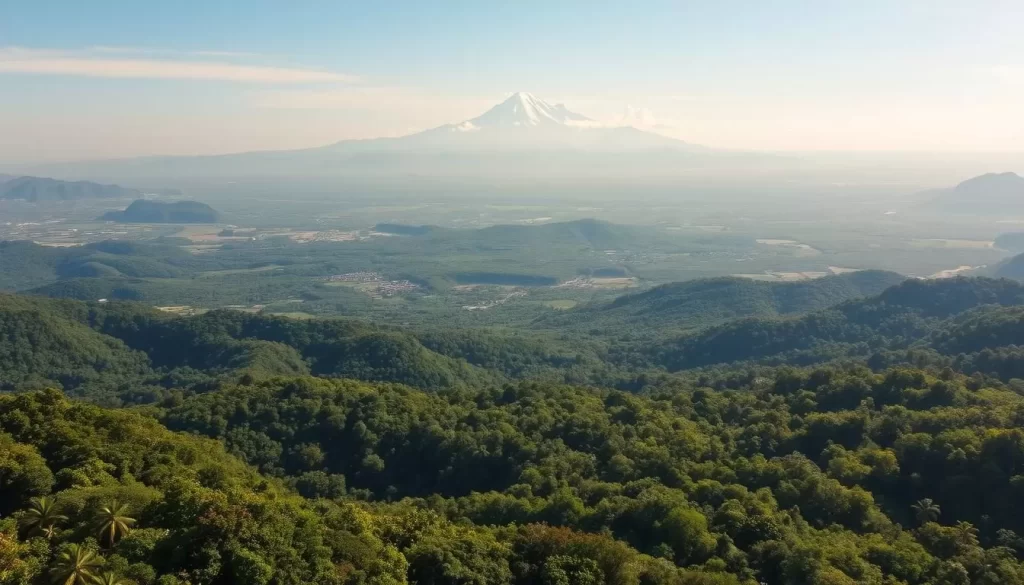
Peak Season vs. Green Season: Pros and Cons
Deciding when to visit Costa Rica involves weighing the pros and cons of traveling during the peak season versus the green season. Your choice depends on your priorities, whether it’s sunny weather, lower prices, or avoiding crowds.
December to April: Sunshine and Crowds
Visiting Costa Rica from December to April means enjoying the dry season, with plenty of sunshine and ideal conditions for outdoor activities. However, this period is considered peak season, attracting more tourists and resulting in higher prices and crowded popular attractions. If you prefer a lively atmosphere and don’t mind the crowds, this is a great time to visit.

May to November: Rain, Wildlife and Deals
The green season, which spans from May to November, brings rain and showers, but it also means fewer travelers and lower rates on hotels and tours. Even during the rainy season, mornings can be sunny, allowing for enjoyable outdoor activities. Moreover, the lush landscapes and increased wildlife activity make this period appealing for nature lovers. With some preparation, you can have a wonderful trip during the green season in Costa Rica.
Month-by-Month Breakdown for Travelers
Costa Rica’s diverse climate means that the best time to visit depends on what you want to do and see. Whether you’re looking for the perfect beach weather, exciting wildlife encounters, or immersive cultural experiences, understanding the monthly rhythms of Costa Rica can make or break your trip.
Best Months for Beach Lovers
For those seeking sun-soaked beaches, January through April are the prime months. During this period, the Pacific Coast enjoys dry, sunny weather, making it ideal for beach activities. Tamarindo and Playa Hermosa are particularly popular during these months.
Prime Wildlife Viewing Months
If wildlife is your main interest, certain months offer unique viewing opportunities. For instance, December to April is the best time to spot resplendent quetzals, while monkeys and sloths can be seen year-round, with increased activity during the green season.
Whale Watching and Turtle Nesting Seasons
Costa Rica’s coastal waters are a haven for marine life. July to November and December to March are the peak seasons for whale watching, with humpback whales migrating from Antarctica. Turtle nesting is another highlight, with leatherbacks nesting from March to July and green sea turtles from July to October.

Local Festivals and Events Calendar
Costa Rica’s cultural calendar is filled with vibrant events. Notable celebrations include Guanacaste Day on July 25th, commemorating the annexation of Guanacaste, and the Virgin of the Sea celebrations, adding a rich cultural layer to your travel plans.
- Experience the best of Costa Rica’s beaches, wildlife, and culture by timing your visit right.
- Enjoy whale watching and turtle nesting seasons for unforgettable marine life encounters.
- Participate in local festivals to immerse yourself in Costa Rican culture.
Packing Tips for Costa Rica’s Changing Weather
Costa Rica’s diverse climate means you’ll need to pack strategically, regardless of when you visit. The country’s unique geography, with coastlines on both the Pacific and Caribbean, creates varied weather conditions across different regions.
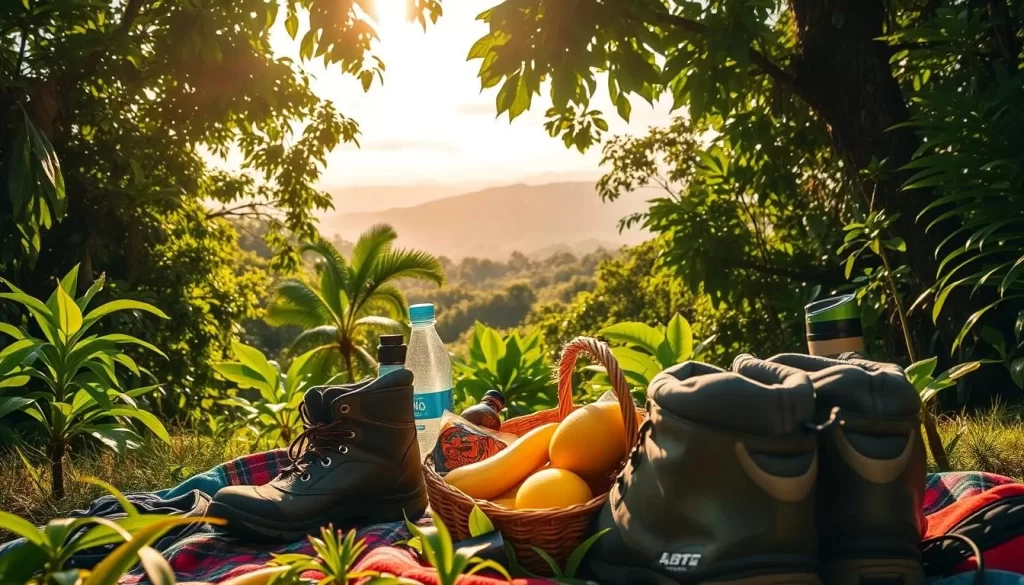
Essentials for Dry Season
During the dry season, prioritize lightweight, breathable clothing such as tank tops, sundresses, and shorts. Don’t forget eco-friendly sunscreen, a hat, and sunglasses for sun protection. Even in the dry season, occasional showers can occur, so it’s wise to pack a light rain jacket.
Must-Haves for Green Season
For the green season, consider packing quick-dry clothing and waterproof footwear to handle the rain. Protect your electronics with waterproof gear, and be prepared for potential flooding in some areas.
Year-Round Necessities
Regardless of the season, certain items are essential for any trip to Costa Rica. These include insect repellent, comfortable hiking shoes, and attire suitable for both outdoor adventures and dining experiences. If you plan to visit higher elevations, such as cloud forests, pack warmer layers for cooler nights.
| Season | Clothing | Accessories |
|---|---|---|
| Dry Season | Lightweight, breathable clothing | Eco-friendly sunscreen, hat, sunglasses |
| Green Season | Quick-dry clothing, waterproof footwear | Waterproof gear for electronics |
| Year-Round | Comfortable hiking shoes, versatile attire | Insect repellent, warmer layers for higher elevations |
Conclusion: Choosing Your Perfect Costa Rican Weather Window
Whether you’re seeking sun-kissed beaches or lush green landscapes, Costa Rica’s climate varies significantly across the year and across different regions. This variability means that the ideal time to visit depends on your priorities, whether that’s sunshine, wildlife viewing, or budget-friendly options.
By understanding the country’s diverse climate patterns, you can plan your trip during the optimal time for your preferences. For instance, the dry season on the Pacific coast coincides with the greener months on the Caribbean side, offering a “weather hack” for travelers willing to explore different regions.
Flexibility is key when traveling to a tropical destination like Costa Rica. Afternoon showers can occur even during the dry season, and weather patterns can vary from year to year. By being open to different conditions and knowing where to go, you can make the most of your Costa Rican adventure, enjoying the country’s rich biodiversity and diverse landscapes.
The above is subject to change.
Check back often to TRAVEL.COM for the latest travel tips and deals.
